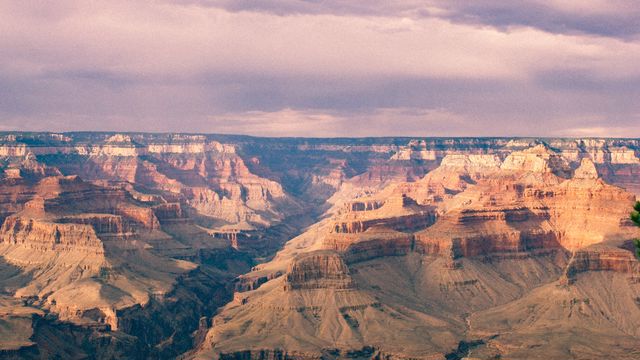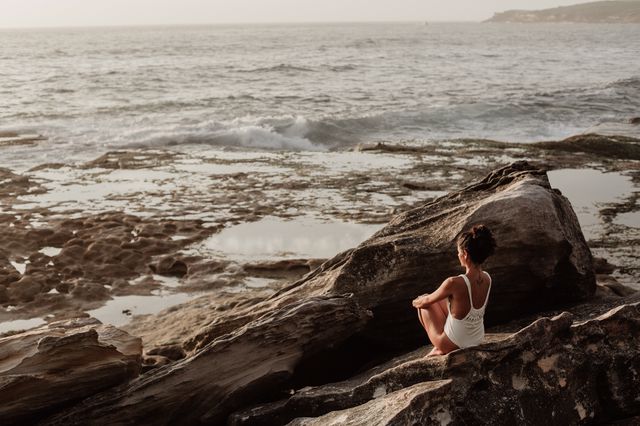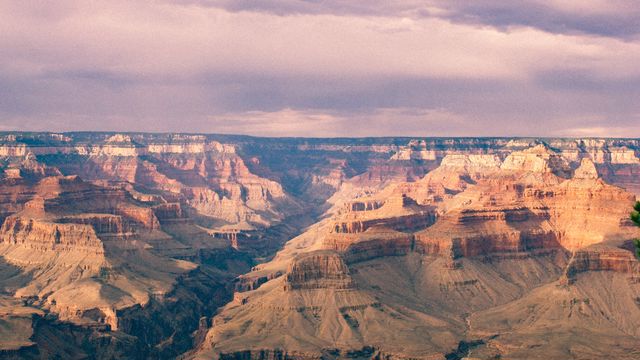
Writer Michael Ventura tells the story of driving through the Southwest with a friend who had never been there. In Arizona, on the edge of the Painted Desert, they stopped at the Petrified Forest, “a vast, barren expanse of chaparral and mesas, on which lie the trunks of ancient trees turned to stone. On these trees, every detail of bark is present and vivid, yet somehow a forest has become rock (Screen World, Psychotherapy Networker, January-February, 2009).”
Michael’s friend bounded out of the car and headed down a slope. He “figured she’d be there a while, absorbing this place out of sight of the road and of me, watching the Petrified Forest’s stones, birds, critters, and clouds, and maybe getting bit by a bug or two—a contemplative engagement with a present terrain.”
As he waited for his friend, Michael described his experience.
“Cars and vans would pull up; couples and families and friends would get out and take pictures of the landscape, and of each other, with video and still cameras. As I stood there, leaning on my car, at least a couple of dozen vehicles, maybe more, came and went. After a few minutes of disbelief, I began timing them. With three exceptions, they stayed no longer than five minutes. Many stayed barely two or three. They piled out of their vehicles, took their pictures, piled back in, and left, presumably headed for the next viewing point, presumably to do the same.”
I had a similar experience when I spent an afternoon at the rim of the Grand Canyon. People would pull up, look for a few minutes, take a picture, and leave. If I were to ask these people, “Have you seen the Petrified Forest…have you seen the Grand Canyon?” they would, most likely answer “Yes.” But I wonder. They have certainly been to these places. They have put their feet on the ground at these places. But have they really seen these places? Have they really allowed their souls to be touched by these places, the way Michael’s friend did?
I can imagine that they will spend far more time looking at their pictures of the Grand Canyon than they actually spent there. And when they look, they will leaf through their photo album, and, like their original visit, they will have a brief look, and move on.

I have several friends who do not carry a camera with them when they travel.
It sounds a bit strange to me, because I love photography. When I got my first real job, one of the first things I bought, even before furnishing my house, was a really nice camera. When I asked them about the practice, they said looking at a place through a lens took away from the time they could look with their eyes. They spoke of taking pictures with their minds.
And I remembered the people Michael described and I saw. Every one of them would bring the camera to their face. They would take the picture…and then they would look away, searching for something else to photograph.
What you see is what you get.
Sometimes, in my work with couples in therapy, I will invite them to sit facing one another and look at their partner for five minutes. Not stare at them, but see them…take them in. When couples are struggling, it is not an easy thing to do. You are taking in this person with whom you are arguing or from whom you have disconnected. But if they stay with it, if they really see one another, amazing things can happen. Some couples begin to squirm and fidget; they feel the discomfort but stay with it. Others relax and their faces soften; you can tell that the quality of their looking has changed.
What you see is what you get. These couples are seeing and getting in ways that they haven’t experienced in some time.

It is easy to go through life being in a place without really seeing and taking in what is there. I call this living on autopilot…going through the motions of life. You can get a lot of tasks accomplished living on autopilot. You can develop a rhythm for life. But stay too long in autopilot, and your rhythm becomes a routine, and your routine becomes a rut. You get a lot done, but you may miss the inviting beauty of the Petrified Forest or the Grand Canyon.
Living on autopilot can also allow us to avoid difficult thoughts, feelings, situations, and relationships. But all of these are real, and they are what is happening to you, so why not step out of the autopilot mode and be mindfully present, even accepting of what is around you. Yes, what is waiting for you may not be the beauty of the Grand Canyon. It may be loneliness or anxiety. It may be emptiness or uncertainty. It may be hurt or grief.
But all of those things are a part of who you are. And your willingness to be present to them, even accept them, gives you the space you need to make a choice or take an action that is full of meaning and purpose. And it also gives you the space to feel a tinge of joy, a spark of peace, a smidgen of hope. They are there waiting for you as well.

I realize lately I have been so caught up in that gotta gitter done world, I feel guilty taking time to just sit and take in the beauty of life. Got slowed down today. A little under the weather. Watching birds at the feeder. Planning to make time to enjoy God’s creation.
Life says it’s time to do it differently.
I have a counterpoint to the statement about using a camera taking away from really seeing a place. As an amateur photographer, I hear that a lot. But it’s simply not true for me. Maybe it’s because I’m thinking about how I can best present the scene, and not simply taking a snapshot, but even years later, I can look at a photo and tell you almost exactly where I was when I made the photo, why I took it, sometimes even what we were talking about. I would strongly insist that using my camera enriches my travel experiences rather than detracting from them.
Thanks for the counterpoint Sam. I thought of you when I was writing the post. And I am there with you…after all, I bought a camera before I bought a couch!! LOL Having seen your some of your photos, most definitely an enriching experience.
But my experience, and I think Ventura would agree, that most of the people encountered were, as you said, simply taking a snapshot. Not really interacting with the subject they were observing.
Thanks for sharing.
Gary
I recently moved. I spent an entire evening walking from room to room, admiring and appreciating all of the beautiful things in my home. I would remember somethings that were gifts from friends or a trinket I bought on a special trip. I wondered as I admired my own home how I could live, surrounded by such beauty and chose to really appreciate it just as I was leaving it behind.
Thanks for sharing , sister!! It seems you can decorate for decorating’s sake…or, as you say, say, surround yourself with memories and reminders of life.
I’m not completely convinced that length of visit = quality of experience. It can take one second for an amazing scene to imprint that beauty forever in your soul. How many people are fortunate enough to even get to see the Grand Canyon for three minutes? If that is all the time you have or choose to spend in one place, I don’t feel I could or should begin to evaluate your level of experience, much less spend my visit in the parking lot timing you. That seems a little judgy. “Should” one spend 30 minutes? One hour? Half a day? A month? I think we are all alive in the world in different ways. I have indeed “seen” (at least in my opinion) so many marvelous wonders – and almost always without bug bites!
Well, I really wasn’t trying to be judgy. I guess I was using the comparison to make the point you were making…being imprinted forever by the beauty. But I do take your point. Just as I took Sam’s point (previous comment) about the camera in the analogy. And there is something to be said for no bug bites. Thanks Debbie!!
“I was blind but now I see”. The gift of seeing our sin & our need for Christ is the beginning of the great journey of seeking , finding, & knowing Him. Seeing THAT is getting a lot. It takes more than a glance. He is everywhere. What else does He want us to see? I am encouraged by those reminding me to slow down & the savor moment. It always brings a thankful heart.
Well said Melonie!! A blessed Easter to you.